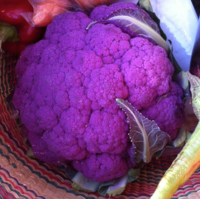
Photo from wikipedia
Recently, growing demand for products enriched with natural compounds that support human health has been observed. Black rice, its by-products, and residues are known to have in their composition a… Click to show full abstract
Recently, growing demand for products enriched with natural compounds that support human health has been observed. Black rice, its by-products, and residues are known to have in their composition a large amount of these compounds with biological potential, mainly anthocyanins. These compounds have reported effects on anti-obesity, antidiabetic, antimicrobial, anticancer, neuroprotective, and cardiovascular disease. Therefore, the extract from black rice or its by-products have great potential for application as ingredients in functional foods, supplements, or pharmacological formulations. This overview summarizes the methods employed for the extraction of anthocyanins from both black rice and its by-products. In addition, trends in applications of these extracts are also evaluated regarding their biological potential. Commonly, the extraction methods used to recover anthocyanins are conventional (maceration) and some emerging technologies (Ultrasound-Assisted Extraction - UAE, and Microwave-Assisted Extraction - MAE). Anthocyanin-rich extracts from black rice have presented a biological potential for human health. In vitro and in vivo assays (in mice) showed these compounds mainly with anti-cancer properties. However, more clinical trials are still needed to prove these potential biological effects. Extracts from black rice and its by-products have great potential in applying functional products with beneficial characteristics to humans and reducing agro-industrial residues.
Journal Title: Critical reviews in food science and nutrition
Year Published: 2023
Link to full text (if available)
Share on Social Media: Sign Up to like & get
recommendations!